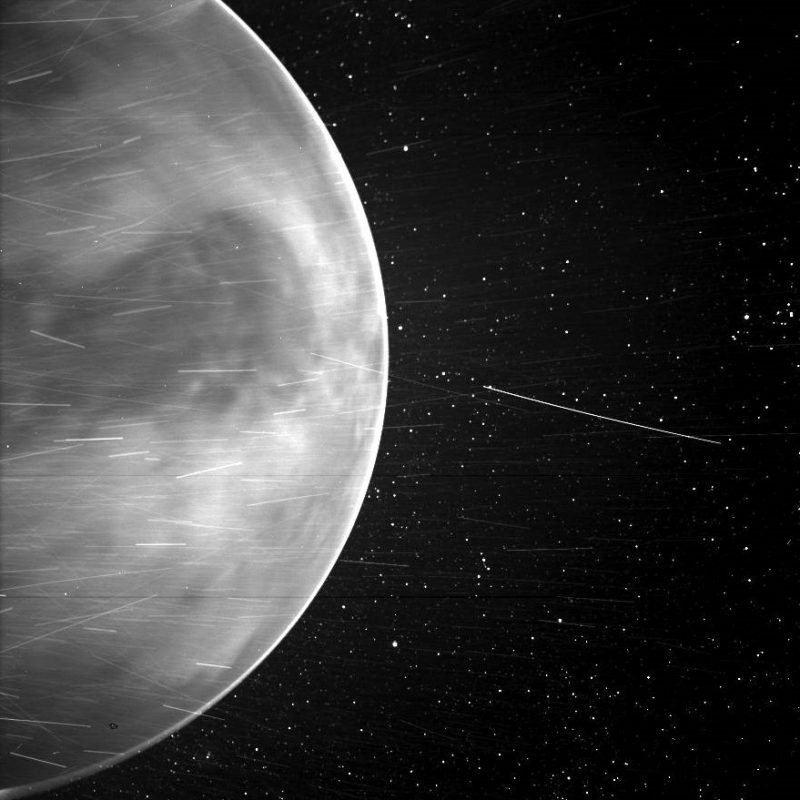Parker Solar Probe Captures A Glimpse Of Venus

NASA released this spectacular image of Venus on February 24, 2021, taken by the Parker Solar Probe during its Venus flyby in July 2020. The solar spacecraft – which launched August 12, 2018 – is passing close to Venus a total of seven times during its seven-year mission in order to get the gravity assists it needs to help propel the craft toward closer and closer sweeps near the sun’s surface.
Parker Solar Probe made its fourth of seven scheduled Venus gravity assists on February 20, 2021.
The Wide-field Imager for Parker Solar Probe (WISPR) captured the image of Venus during the Parker Solar Probe’s third pass of the planet on July 11, 2020. The nightside of Venus is captured, and the bright edge is probably nightglow, or light emitted by oxygen atoms high in the atmosphere that recombine into molecules in the nightside. The large dark expanse near the center of Venus is Aphrodite Terra, a broad highland region on the surface. The spacecraft was 7,693 miles (12,380 km) away when it captured this image.
The streaks seen in the image are typically caused by a variety of objects, including charged particles, sunlight reflected by grains of space dust, and particles of material expelled from the spacecraft after impact with the dust grains. The odd black spot near the bottom is an artifact of the WISPR instrument.
To see the full image, including Orion with its belt and famous nebula near the bottom right of the image, visit NASA’s Parker Solar Probe webpage.
These gravity assists using Venus, by the way, will set the Parker Solar Probe up for its eighth and ninth close sweeps past the sun, slated for April 29 and August 9, 2021. In all, the probe has 24 scheduled orbits around the sun during its seven-year mission. During this time, NASA likes to say, the probe will “touch” the sun, that is, fly within the sun’s atmosphere. During each of its sweeps past the sun, NASA said, the Parker Solar Probe will break its own nearness records to the sun.
Ultimately, the Parker Solar Probe will come within 4 million miles (6 million km) of the sun’s surface.
Bottom line: While using Venus for a gravity assist, the Parker Solar Probe turned its camera on the planet and made this remarkable image.



 Creators of mankind
Creators of mankind Description of “Tall white aliens”
Description of “Tall white aliens” Where they came from?
Where they came from? About hostile civilizations
About hostile civilizations The war for the Earth
The war for the Earth “Tall white aliens” about eternal life
“Tall white aliens” about eternal life Video: “Nordic aliens”
Video: “Nordic aliens” Aliens
Aliens Alien encounters
Alien encounters The aliens base
The aliens base UFO
UFO Technology UFO
Technology UFO Underground civilization
Underground civilization Ancient alien artifacts
Ancient alien artifacts Military and UFO
Military and UFO Mysteries and hypotheses
Mysteries and hypotheses Scientific facts
Scientific facts


















